#tales of belet
Text
Soon

#tales of belet#webcomic#webtoon#comics#comicart#comic#coming sooooon#coming soon#2023#webtoons#medieval#knight#belet
2 notes
·
View notes
Text
Review: City of the Plague God
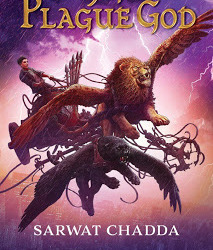
City of the Plague God by Sarwat Chadda
My rating: 5 of 5 stars
The latest entry in the Rick Riordan Presents series, Sarwat Chadda's City of the Plague God introduces us to Sikander Aziz, younger son of Iraqi refugee parents, and his kind-of-friend Belet, adopted daughter of the goddess Ishtar. Sikander, whose parents run a popular Arabic/Mediterranean deli, misses his older brother Mo, who recently passed away. Sik is only thirteen but is a very responsible young man, who helps his parents run their business in lower Manhattan. Imagine his shock when the Mesopotamian god Nergal shows up with some demons (one of which speaks entirely in rhyming couplets) claiming that Sik has something that his brother Mo stole! Saved by the feisty Belet, the adopted daughter of Ishtar, goddess of love and war, Sik embarks, rather unwillingly, on an adventure to save Manhattan, his parents, and his friends, from Nergal the Plague God, whose plague dogs run rampant in the city Sik loves.Chadda has written a well-paced and truly fascinating tale using Gilgamesh and the gods and goddesses of Mesopotamian mythology. He also manages to reframe aspects of Arabic and Islamic culture in ways that are instructive for teaching tolerance and understanding. (In particular, I loved his use of common Islamic terms that are all too often misused or misconstrued, such as jihad, a righteous struggle that is often personal.) Chadda touches on the prejudice and bullying that Sik has had to put up with, though Sik is rather inured to it at this point. But this story makes young readers identify strongly with Sikander, his love of family, and his feelings of loss for his brother. Belet is also a fabulous, fearless character. I hope that we will see more novels from Chadda in this world. This novel, begun before the start of the pandemic, encourages young people to be strong in the face of our present adversity.The audiobook, narrated by Vikas Adam, was delightful.I received an advance review copy of this novel in exchange for an honest review.
~ ~ ~
Want the purchase of City of the Plague God to benefit your local independent bookstore? Click HERE.
Want the digital audiobook of City of the Plague God to benefit your local independent bookstore? Click HERE.
Want your ebook purchase of City of the Plague God to benefit independent bookstores in general? Click HERE.
Follow Marzie's Reads on Bloglovin'.
View all my reviews on Goodreads
© Marzie's Reads 2017-2021, All Rights Reserved.
https://ift.tt/36B572O fantasy, middle grade, mythology, Sarwat Chadda
4 notes
·
View notes
Text
Mesopotamian Mother Goddess (Ninmah, Nintud/r, Belet-ili)
The Mesopotamian mother goddess is known under many names, the most prominent of which is the Sumerian name Nintud/Nintur. Other frequent names are Ninmah and Belet-ili. She was in charge of pregnancy and birth and, especially in earlier periods, appears as the creator of humankind.
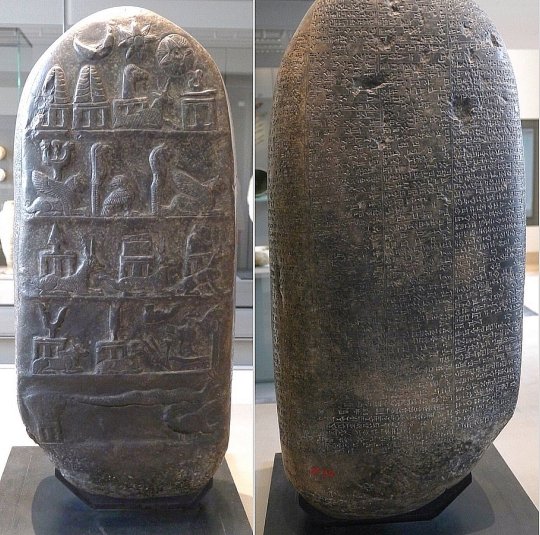
image: Boundary stone (kudurru) of the Kassite ruler Melishipak (r. 1186-1172 BCE) at the Louvre Museum, showing in the top right corner an inverted Ω thought to be a symbol of the mother goddess. Sb 22. (c) RMN.
Functions
A recent and comprehensive study of the mother goddess(es) in ancient Mesopotamia is still lacking. Black and Green (1998: 132) already pointed out that the terms 'mother goddess' and 'fertility goddess' are problematic since many goddesses could at times include these aspects. Because the functions of the three goddesses mentioned here overlap significantly, the three goddesses Nintur, Ninmah, and Belet-ili are treated in one article. For other names of the 'mother goddess' see Krebernik (1993-98a: 503-7). The term 'mother goddess' is retained here as a matter of convenience.
In the third and second millennium BCE, the mother goddess was in high standing within the divine hierarchy of gods, as for example in the Lamentation over the Destruction of Sumer and Ur (ETCSL 2.3.3, line 55; Michalowski 1989: 39) or in the Lament over Nibru (ETCSL 2.3.4, line 237; Tinney 1996: 115), where she is mentioned together with the highest gods of the Mesopotamian pantheon, An, Enlil, and Enki. In the course of the second millennium BCE this situation changes and the goddess loses some of her high standing in favour of the healing goddess Gula and the goddess of love and war, Ištar (Krebernik 1993-98a: 512).
One of her main functions was associated with pregnancy and childbirth. She guides children when they are still in the womb and feeds them after they have been born (Stol 2000: 80).
The mother goddess also appears as the creator of humankind. In the Akkadian myth of Atrahasis, the Mesopotamian flood story, Nintur created humankind by mixing clay with blood of a slain god (Lambert and Millard 1969: 57-61), and in the Sumerian tale of Enki and Ninmah (ETCSL 1.1.2) the two deities compete by creating various creatures out of clay, resulting ultimately in the creation of humans. The clay is said to come from the top of the abzu TT , the cosmic underground waters. In her role as the creator of humankind she is eventually replaced by the god Enki/Ea, as visible in Enūma eliš TT (tablet VI, lines 32-36). Frymer-Kensky (1992: 70-80) referred to the diminishing importance of goddesses even in primarily female functions, such as creation, as the "marginalization of goddesses".
Divine Genealogy and Syncretisms
Nothing is known about the mother goddess's divine parentage. The gods An, Enlil, Enki, and Šulpae are at times considered to be her husbands (Krebernik 1993-98a: 507-8). Her offspring were so numerous that they cannot all be mentioned here (see Krebernik 1993-98a: 508-10 for further information). The beginning of the second tablet of the god list An-Anum (Litke 1998: 66ff.) lists several names of the mother goddess.
Cult Place(s)
The main city where the mother goddess was worshipped is the city of Keš (not Kiš), which has not been located yet (for possible locations and further literature see Edzard 1976-80b: 573). It has been suggested that Keš was the sacred district of the city of Urusagrig (Irisagrig), close to Adab (Wilcke 1972: 55). An inscription of the Neo-Babylonian king Nabonidus indicates that Keš was still in existence in the first millennium (Foster 1983). Other major cities where her cult is attested are: Adab, Assur, Babylon, Lagaš, Larsa, Malgium, Mari, Nippur, Sippar-Aruru, Susa, Umma, and Ur (Krebernik 1993-98a: 511-2). For evidence of worship of Ninhursaŋa see Heimpel 1998-2001b.
Time Periods Attested
Because the mother goddess appears under so many different names, she is attested from the Early Dynastic period until well into the first millennium BCE, though, as mentioned above, she loses importance throughout the second half of the second millennium.
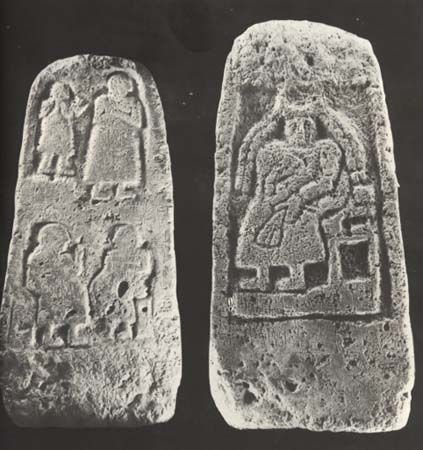
Iconography
In Mesopotamian iconography, the mother goddess is represented by the Ω sign, which is thought to represent a uterus (Seidl 1993-98). Sometimes the Ω sign is accompanied by a knife, which is interpreted as the tool that is used to cut the umbilical cord after birth. Specific anthropomorphic representations of the mother goddess are difficult to distinguish from depictions of other goddesses (Seidl ibid.). The so-called Göttertypentext (Stol 2000: 80) contains a passage describing the looks of the mother goddess.
Name and Spellings
Not all the names of the mother goddess can be enumerated here. The most important ones are mentioned in the title to this entry. Other important names that also occur frequently in the written record are Aruru, Dingirmah, and Ninhursaŋa (Heimpel 1998-2001b; Stol 2000: 74-9). However, her most frequently attested name is Nintur.
The Sumerian names of the mother goddess discussed here have the following meanings:
Ninmah "Magnificent Queen"According to Heimpel (1998-2001) the adjective mah "magnificent" is frequently associated with Ninhursaŋa.Nintud/Nintur "Queen of the (birthing) hut" (Jacobsen 1973) The Sumerian word /tur/ is also an allusion to the word for uterus/womb (šà-tùr) (Jacobsen 1973 Cavigneaux and Krebernik 1998-2001). Some scholars (Selz 1995) follow the traditional interpretation that the element /tu/ is the same as the Sumerian verb /tudr/ "to give birth," but this has been contested on phonological grounds (Jacobsen 1973 Cavigneaux and Krebernik 1998-2001).
The Akkadian name Belet-ili means "Queen of the gods.
"Written forms: (see Krebernik 1993-98)
Ninmah
Ninhursag
Nintu, Nintur, Nintud
Belet-ili, Beletili
21 notes
·
View notes
Photo
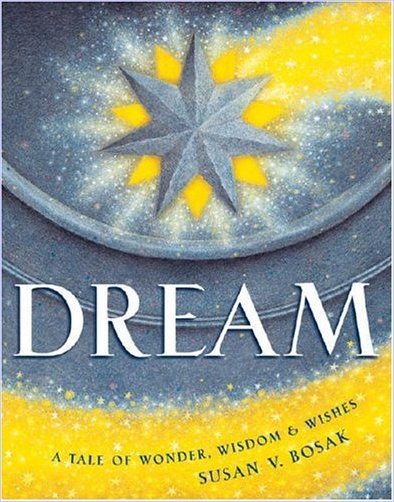
Inspiring Treasure...Dream
Being a fan of Kittie Nesius Beletic's "What Color Is You Dream?" published by Brown Books Publishing Group, I thought I might enjoy this book, "Dream: A Tale of Wonder, Wisdom, & Wishes" by Susan V. Bosak, so I ordered it. I am glad that I did! :)
Go to Amazon
Love this book for all ages!
I received this book as a preset about 5 years ago when I was struggling with depression. It tells the story of growing up through different life phases--as an infant, a toddler, a tween, a teen, a young adult, adult, and senior. It includes beautiful pictures of each, each by a different artist and in a different style. There is a powerful section describing disappointment in life. It describes feeling that "life wasn't supposed to be this way." It helped me normalize my experience with depression and helped me look for light and kindness to pick me up again.
Go to Amazon
Love this book
I purchased this book for my daughters high school graduation. I was trying to find something different than the usual Dr. Seuss "Oh the places you'll go" that is often the standard for graduations (which she did receive as a gift from a neighbor, so now she has both!). I was so glad I found this book, it is lovely. The pictures are well illustrated and the message in the book is perfect for my graduating "dreamer". She was just thrilled with this book.
Go to Amazon
Excellent purchase!
I bought this book mostly for the illustrations and wasn't disappointed at all. The inspiring quotes on every page give the book additional value. I feel great about my purchase :-)
Go to Amazon
Five Stars
Great book, great quotes, and great pictures. It can in very good conditions.
Go to Amazon
Five Stars
Beautiful book with inspirational quotes!
Go to Amazon
Five Stars
Beautiful book. Excellent for supporting classroom discussions and dreams and aspirations. And simply inspirational for all.
Go to Amazon
A beautiful story with beautiful illustrations.
I read this book to my 5th grade students at school. They were engaged throughout the entire book. This story prompted them to ask meaningful questions about life. They learned that dreams and goals for life change as you get older. It also helped them to understand that working hard at your dream is a big part of success! I loved it!!!
Go to Amazon
Two Stars
Great!
Four Stars
Five Stars
Five Stars
Four Stars
Four Stars
Four Stars
Never Stop Dreaming
1 note
·
View note
Text
Shards of the Unmourned House
On a shimmering warm day that was otherwise uneventful in the small mining town of Gnisis, a pod of small craft skirted its way along the islands off the northern coast. To most, such activity would not have seemed amiss, for fishing has always been a staple of the local economy, attracting dunmer and outlanders alike to earn a reliable living wage. Truth be told, even smuggling is not as uncommon as the local constabulary would have it. Still, something more than fish or skooma burgeoned in the crates of these vessels, something that would upend the usual boring peace of the Redoran outpost city.
Passing guards first noted the ashlander guarding the stash on one of the islands and, suspecting an easy confiscation of drugs or dwemer junk, moved in quickly to intercept. But the crates, some stamped with a daedric letter ‘R’, contained an unusual cache beneath a token array of skooma bottles. Within rested broken shards of pottery - black, striated, and marked with red.
Local guard Trevalyn Sethas, Telvanni wizard Draecynth, and Mage’s Guild member Mirielle picked their way through the shards at the local cornerclub. Something was definitely amiss, for smuggling demanded that contraband fetch a price or fill a need, and these shattered remnants seemed wholly undesirable. Though they looked as though they might be simple nativeware, the mages soon determined that there was magic lingering on the pieces. Thus, Trevalyn and an ordinator assigned to the region, Syndareth Myrae, took the shards to be appraised by Llandras Endravel, wizard of Sadrith Mora.
Llandras’ revelation was a disturbing one. The pieces were native, to be certain, but fragments of the craft of House Dagoth, still imbued with power that resulted in memory loss, susceptibility to control, and compulsion to preserve the pieces - effects that increased upon prolonged exposure. The mage urged that the artifacts be destroyed at once, and insisted that those who handled them could already be in some way affected.
The dagothware in Gnisis was quickly remanded to the custody of the Temple, Ordinator Salen Saren overseeing its disposal. Still, the smuggling persisted, and Trevalyn and Redoran Tanunden managed to garner information from one of the ashlander smugglers that the ultimate recipient was a Telvanni who lived in some sort of stone structure. Though this was little to operate on, the conversation was overheard by Telvanni Zarthil Tavorath, who thus confirmed the opportunity to acquire artifacts of power for himself.
Zarthil dispatched his Tel Edryl underlings to Gnisis in force and, with little thought to potential danger or for the safety of local residents, began magically excavating in search of forbidden booty. A potential House conflict began to loom in addition to the immediate threat from the Sixth House wares, resulting in a call for Redoran reinforcements from Balmora - though with the House stretched thin in both domestic and foreign affairs, any assistance threatened to arrive too late. A pair of the mage underlings were apprehended and detained for trial, but it was clear that matters were rapidly spiralling toward the chaotic.
Fortune did provide, however, in the form of visiting friends from the mainland. Redoran Feran Derethi and Indoril Alavesa Ravel arrived in Gnisis as Llandras and Ordinator Saren launched forth an expedition to seek the source of the smuggled pottery, a dangerous, harsh trek along the northern coast toward the rumored locale of the lost stronghold of Kogoruhn. Together with Tanunden, Trevalyn and Ethaen Relvi, the group picked their way through the craggy wastes to the old Velothi ruin of Valenvaryon, a site plagued by the spirits of angry ancestors and forgotten tales. Ordinator Saren managed to commune with one of the ancestral ghosts, and though they could not on this occasion be appeased or committed to rest, the spirit did indicate that others had passed through before bearing items of an unholy nature.
The voyagers girded their loins and continued southeast, halting at the daedric shrine of Ebernanit, a spiteful ruin dedicated to the Prince of Destruction, Mehrunes Dagon. Herein lay danger, though not in the form of the accustomed flame atronachs - rather, a Lawman of Tel Edryl lay in wait, the vicinity laden with traps set by the master Tavorath himself. Though the Lawman accosted the explorers with illusory magic that fragmented visual reality and nodes that sprayed electrical shocks, he was eventually overpowered by Feran’s sword, Ethaen’s whip and the sheer bread-fueled bulk of Tanunden. Llandras, who has taken an injury that knocked him unconscious, was shielded by both the stalwart Alavesa and an annoying Telvanni mage-bubble defense.
The Edryl Lawman did not fare well. Tavorath had planted a safeguard to wipe the mer’s memory were he captured for questioning, but the resultant magic left him susceptible to the power of the Dagoth artifacts, which left him a frothing, ranting heap. Nelseth, an altmer wandering the wastes had happened upon the party, disoriented and convinced he was in Mehrunes Dagon’s plane of the Deadlands. Though perhaps bearing information on activity in the region, the altmer was struck with a paralysis spell and left incapacitated during the fracas. With party members injured, the Lawman to contain and this confused altmer witness to contend with, the party deemed it best to call a halt to the exploration - for now.
Back in Sadrith Mora, the Edryl Lawman’s condition only seemed to deteriorate, and he was reduced to a desperate and pathetic state, attempting to smash his own skull against the pavement. Past immediate care, it was determined that the mer be transported to Vivec City for Temple care. As the group attempted to determine a plan of action for dealing with Tavorath, the wizard himself appeared. Though he seemed perhaps genuinely shaken at his Lawman’s fate, he scathingly refused Trevalyn’s personal challenge and vanished to seek his own counsel. Nelseth, still prone on the cobblestones in his state of paralysis, tried to ease a dropped piece of jerky into this mouth with his tongue and failed.
The demands of the situation in Gnisis beckoned, and those tied to it were forced to return. Nelseth, once cured of his paralysis, sketched a picture of the facial markings he had seen upon ashlanders in the area. Not anything he could recognize, Trevalyn hoped that perhaps Vehk Arendu and his mysterious connections could provide a lead - if not, the enterprising mer might be of some assistance in repairing the ruined Gnisis roads.
Still, as for the source of the smuggling, no one possessed a legitimate clue - until a wandering ashlander, also part of Hlaalu, eased his way into town. Shevinahaz Belet-Seri was caught by Ethaen Relvi attempting to stash a pair of crates marked with the daedric “R” behind the Resting Kwama cornerclub, while the odd altmer and artificer Aicantar did a lot of standing around in the street. House Redoran, with assistance of Ordinator Myrae, subjected Belet-Seri to questioning (and the little known technique of breadboarding), and the half-ashlander finally revealed vital information. While his only goal had been, apparently, the distribution of skooma, he was given the crates by ashlander associates and was aware of the location of the smuggling operation’s headquarters.
Surprisingly, Zarthil Tavorath made an open appearance in Gnisis the following night, due to the efforts of his enterprising underling, Valith. Valith had revealed to Trevalyn that Tel Edryl was in disarray over the recent, disturbing events, and the Redoran and Telvanni managed to come to an agreement - Tel Edryl would provide its resources in combatting the smuggling operation and return any Sixth House artifacts in its possession to the Temple for disposal, and Redoran would cease in pursuing retribution against Tavorath.
Now,it falls upon Gnisis and its allies to deal with the director of the excavation and smuggling - a Telvanni mage known as “Ruvene” who has crafted herself a niche somewhere on the islands off the coast of the West Gash….
0 notes
Text
More promo
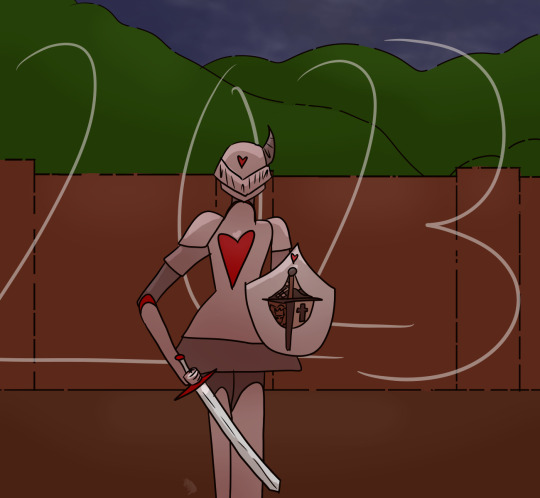
#tales of belet#medieval#webtoons#webcomic#webtoon#coming soon#coming sooooon#comics#comicart#belet#knight#red
1 note
·
View note
Photo
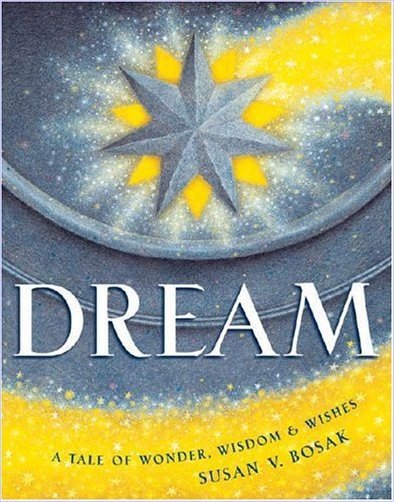
Inspiring Treasure...Dream
Being a fan of Kittie Nesius Beletic's "What Color Is You Dream?" published by Brown Books Publishing Group, I thought I might enjoy this book, "Dream: A Tale of Wonder, Wisdom, & Wishes" by Susan V. Bosak, so I ordered it. I am glad that I did! :)
Go to Amazon
Love this book
I purchased this book for my daughters high school graduation. I was trying to find something different than the usual Dr. Seuss "Oh the places you'll go" that is often the standard for graduations (which she did receive as a gift from a neighbor, so now she has both!). I was so glad I found this book, it is lovely. The pictures are well illustrated and the message in the book is perfect for my graduating "dreamer". She was just thrilled with this book.
Go to Amazon
Five Stars
Beautiful book. Excellent for supporting classroom discussions and dreams and aspirations. And simply inspirational for all.
Go to Amazon
Four Stars
Good content
Go to Amazon
Five Stars
My students really enjoyed this book.
Go to Amazon
Five Stars
Wonderful book! Wonderful to give as gift!
Go to Amazon
Four Stars
I like to give this to graduates for inspiration
Go to Amazon
Five Stars
Beautiful book with inspirational quotes!
Go to Amazon
Two Stars
Great!
Five Stars
Excellent purchase!
Four Stars
Four Stars
Never Stop Dreaming
1 note
·
View note